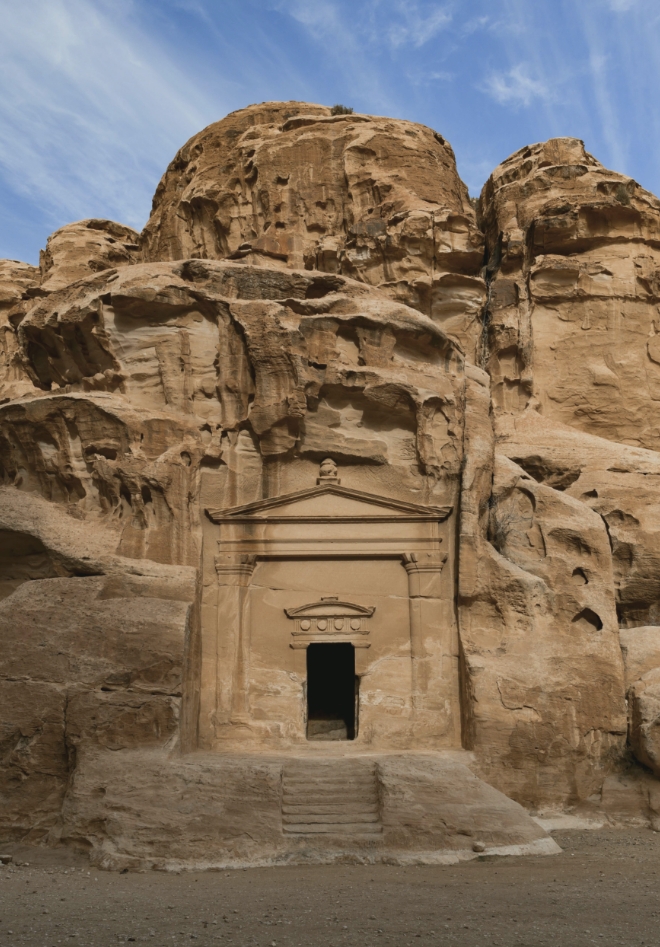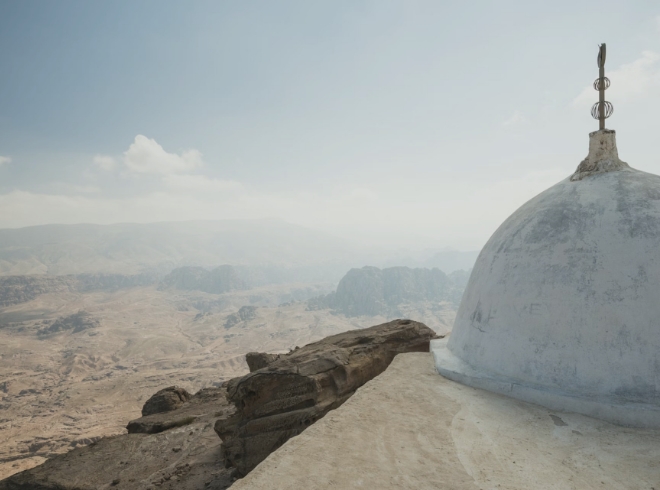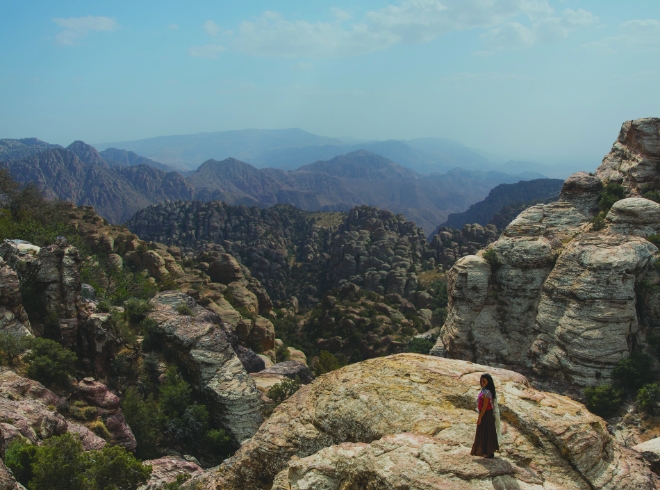Discover the wonders beyond the ancient city with our guide to nearby attractions around Petra. From breathtaking natural landscapes to historical sites steeped in centuries of history, the area surrounding Petra offers a treasure trove of experiences for adventurous travelers.
The Neolithic village of Bayda
It is thought to have been occupied from 7200 BC to 6500 BC, which makes it one of the first settled villages in human history. Around that time, the settlement burned down, and was rebuild rebuilt. After its reconstruction, it was only inhabited for a short while, before being totally abandoned. The remains of the houses and a retaining wall are still visible today. They are remnants of one of the first transitions from semi-settled nomads to settled villagers and the start of an agrarian economy.
At the Bayda Neolithic site, you can view scientific reconstructions of what the Neolithic dwellings may have looked like. It was excavated in the1950s and 1960s by Diane Kirkbride and is located within the protected area of the Petra Archaeological Park. This site, holds one of the oldest settlements in Jordan.During this period, hunters and gatherers lived seasonally in this fertile and sheltered area.During the Neolithic period, between 8,330 and 7,000 B.C., a permanent village of farmers occupied Bayda and began the practice of agricultural and the herding of domesticated goats and sheep.
Many of the concepts and practices that we use today in agrarian societies started in small settlements such as these. The settlers lived in round houses that, although easy to construct, had a serious drawback - it was difficult to add a room to a round structure, and a struggle for a solution is visible.
Siq Al Barid
A ten-minutes drive north of Petra is Siq al-Barid, also referred to as 'Little Petra' due to similarities with the main site. It is thought to have been an important suburb of Petra. It is accessed through a narrow opening, similar to the Siq but on a much smaller scale. The site includes tombs, temples, water channels and cisterns carved out of the rock as well as the remains of frescoes on plaster.
This is one of the most important features of Bayda, where many religious activities were held, including the Feast of Drink, during which the king of the Nabataeans hosted celebrations and provided drinks for his guests. There is also a biclinium with the remains of a fresco painted by the Nabataeans, depicting grape vines, which supports the view that Bayda was a center for wine production. In the Siq al-Barid, the Nabataean irrigation system, which distributed water through long channels, reservoirs carved into the rock, and dams, stands as evidence of the sophistication of this system.

Shkarat Msaied
Shkarat Msaied, situated approximately 16 kilometers north of Petra, has indeed been under excavation by the University of Copenhagen in collaboration with the Department of Antiquities and the Petra Development and Tourism Region Authority since 1999. It has revealed remnants of a small settlement dating back to the first half of the Middle Pre-Pottery Neolithic B period, roughly 9,200 to 8,500 years ago. This period marked a significant transition in human society, with the emergence of farming, the shift from nomadic lifestyles to settled village communities, and the transition from a hunter-gatherer lifestyle to one based on agriculture and production.
Set amid the Sandstone Mountains of the Namala region Shkarat Msaied rests on a small plateau that 1000m above sea level. The plateau was used for agriculture by the Nabataeans as well as in recent times locally available limestone and sandstone were used to construct the buildings of this settlement as well as oak pistachio and juniper wood.
Several ancient stone tools have been found here and archaeological excavations at the site indicate that the highlighted structure was used for ceremonial burials which involved certain rites and rituals. More than 15tombs have been unearthed here and human remains have been found with the skulls detached from the bodies. It is thought that this is due to certain religious beliefs whereby people worshipped their ancestors who were represented by the skulls of generations past.
Ba’ja village
The Neolithic village of Ba'ja is a remarkable archeological site that dates back 9000 years. This site was among the first known settlements in the world and it was first studied by archaeologists in 1984 and it has been extensively excavated since. An interesting architectural feature seen here is the circular shape of the rooms and houses. A wooden pole would have been placed in the center to hold up a roof of branches and mud. The most recent excavations here have confirmed that Baja was a major production center for a wide variety of goods that were traded along the rift valley nine millennia ago. These include jewelry, specifically bracelets, made from sandstone, which were produced by the residents of Baja in an almost industrial manner. These luxury goods were used locally although it’s likely that most were exported. In addition, many stone tools and artifacts have been found at this site, including shells used as decorations, grinding tools, clay artifacts, arrow heads and flint tools, all of which were probably traded. One of the most amazing discovery at the Ba'ja archeological site in 2018 was a richly furnished tomb of a young girl, which had an ancient magnificent necklace made of 2,500 beads.
Aaron's Tomb
It is believed that Moses' brother Aaron died and was buried in the Petra area and a white-domed mosque, built in the 14th century, commemorates this.
The Mosque stands atop Aaron's Mountain (Jabal Harun), which is the highest peak in the area at 1350 meters above sea level.
It has long been a place of pilgrimage for the locals, and is worth a visit if you have an extra day in Petra. Good physical fitness is required for the long hike there and back.

Shobak Castle
This impressive Crusader castle was built by Baldwin I of Jerusalem in 1115 and was originally called 'Krak de Montreal' or 'Mons Regalis', named in honor of the king's contribution to its construction (Mont Royal). In at its heigh, the castle housed a considerate number of people. It was attacked several times by Saladin and finally fell to him in 1189 after a two-year siege. The Mamluks later restored the castle in the 14th century.
Dana Nature Reserve
Jordan’s largest nature reserve, the Dana Reserve spans across 320 square kilometers and encompasses scenic mountains and wadis that host a plethora of fascinating and beautiful wildlife. It is less than an hour’s drive from Petra and features a lovely guesthouse perched on the edge of a hill overlooking the spectacular Dana Valley. There is also a campsite and a range of tours and trails available.
For more information visit www.rscn.org.jo

Wadi Rum
The striking red sandstone desert, celebrated for its Lawrence of Arabia fame, is certainly worth a visit while you are in Jordan. Wadi Rum is best experienced with an overnight trip, allowing you to enjoy both the sunset and sunrise, spend a night in a traditional Bedouin tent, and learn about the unique culture and hospitality of the wonderful people who live in this desert.
For more information, visit www.wadirum.jo


